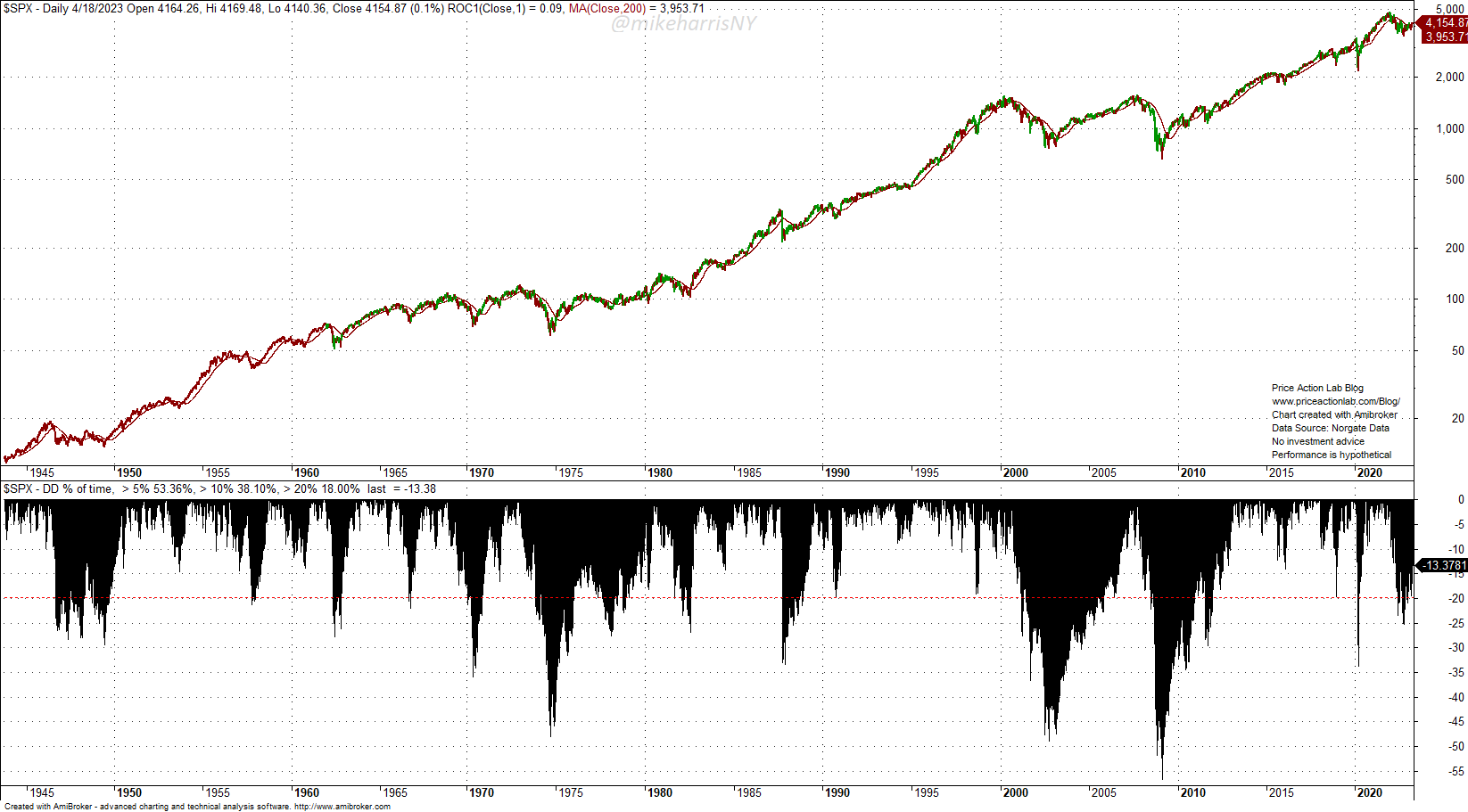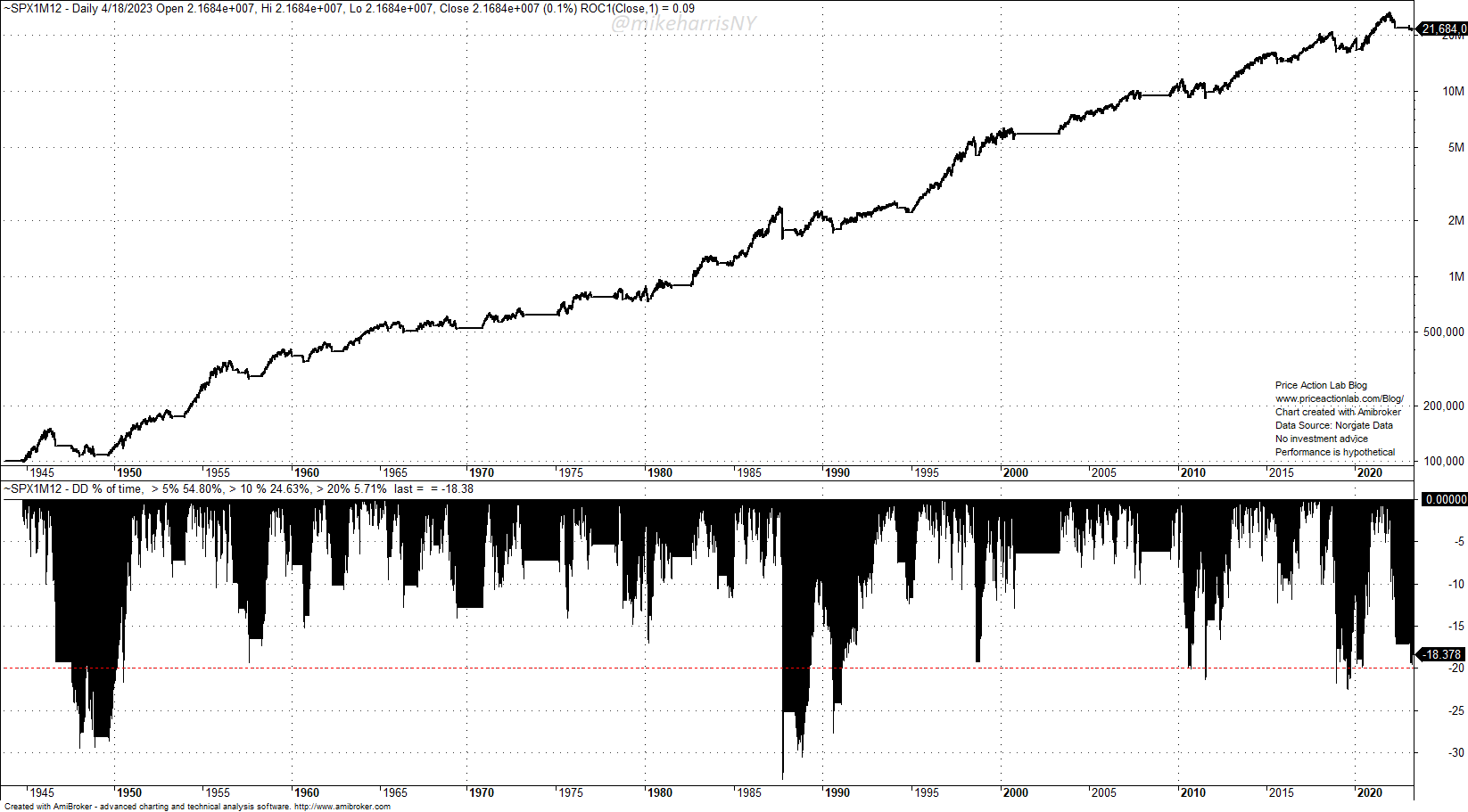Passive investors in the US equity markets are the worst gamblers due to the frequent risk of uncle point in the form of large corrections.
Since 1943, the S&P 500 index has been in a correction of more than 20% from all-time highs, 18% of the time, as the chart below shows.
It took about 13 years for the index to recapture the top of 2000 due to the dot com and GFC back-to-back bear markets with 50% or more drops from all-time highs.
Before that, it took nine years for the index to recapture the 1973 highs, after a nearly 50% drawdown in 1974.
In hindsight, passive investors claim that the stock market always goes up, but along the way there are potential uncle points for those who cannot withstand large reductions in portfolio value.
No one knows the future, and the scenarios of a long consolidation or even extended downtrend in US equity markets cannot be ruled out. However, in the case of passive investing, the usual warning of future performance not being an indication of future results does not seem to apply: the claim is that stocks always move up.
This means that passive investors are terrible gamblers. At least those who do not act when corrections occur, but then there is no basis for calling them passive investors if there is timing involved, other than the usual dollar-cost averaging.
In an article late last year, I discussed the risks of passive investing and market timing, and I used the simple example of the popular 12-month momentum strategy for the latter. This is a table from the article.
| Risk of Uncle Point | Risk of Ruin | |
| Passive buy and hold | Yes | No |
| Market Timing | Yes | Yes |
The advantage of passive investing is that it cannot cause ruin, assuming the equity market does not drop near zero. On the other hand, timing faces ruin in case the strategy underperforms for extended periods. Both passive and timing face the risk of uncle point.
The simple timing strategy based on the 12-month moving average (buy above the average and sell below), has been in a 20% or larger drawdown about 6% of the time versus 18% of the time for passive investing.
The risk reduction has come with a higher Sharpe, 0.53 for passive buy and hold versus 0.64 for the timing strategy. However, the better risk profile for timing comes at a lower annualized return of 7% versus 7.6% for passive.
All in all, passive investors are the worst gamblers in the markets, but so far lucky not to face the risk of ruin, something that is possible with market timing strategies. However, both passive and timing face the risk of uncle point, or reaching a point after which the investor cannot continue. For passive, the risk of uncle point is higher, and for timing, it is lower, provided the equity markets do not enter a long consolidation where market timing strategies generate high losses.
In summary, passive investors hope the market will continue to always go up, while market timers hope there will never be a long sideways market to break the strategies. The latter are better market timers as long as the strategies work, the former are the worst, due to inaction.
Premium Content
Online Books
Premium Articles
Systematic Market Signals
By subscribing you have immediate access to hundreds of articles. Premium Articles subscribers have immediate access to more than two hundred articles and All in One subscribers have access to all premium articles, books, premium insights, and market signals content.
Free Book
Subscribe for free notifications of new posts and updates from the Price Action Lab Blog and receive a PDF of the book “Profitability and Systematic Trading” (Wiley, 2008) free of charge.
Disclaimer: No part of the analysis in this blog constitutes a trade recommendation. The past performance of any trading system or methodology is not necessarily indicative of future results. Read the full disclaimer here.
Charting and backtesting program: Amibroker. Data provider: Norgate Data









